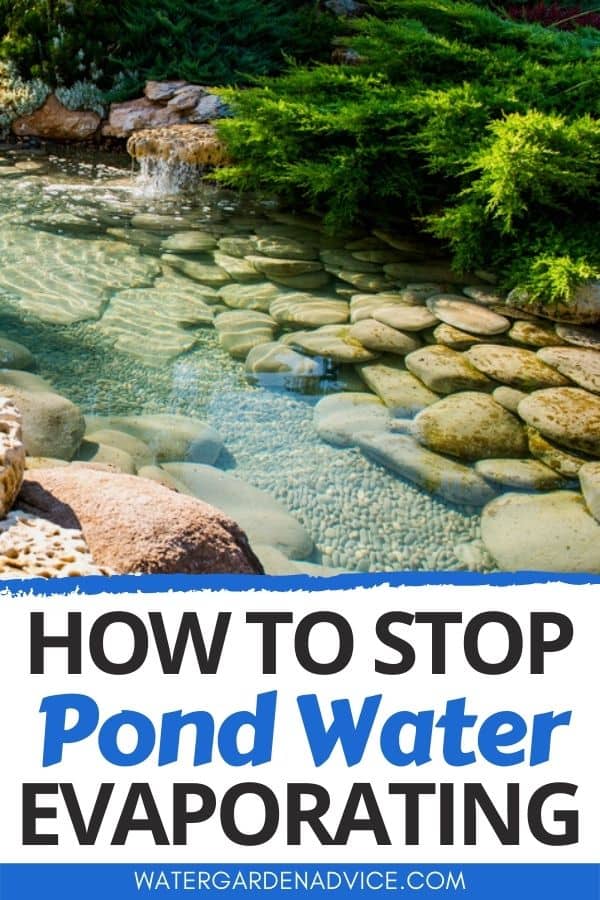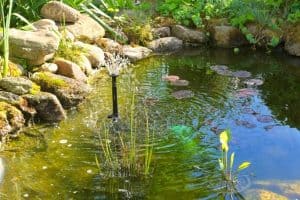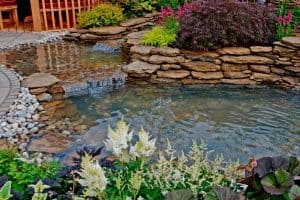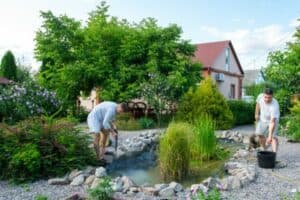Water evaporation is a common problem for pond owners, especially during the hot summer months.
While you can’t prevent pond evaporation completely, you can reduce the amount of water loss with a few simple strategies.
Here are 7 ways to reduce pond water evaporation during hot weather.
Following these steps will ensure that your fish and pond plants have a healthy and comfortable environment during the summer months.
This post contains affiliate links. Please read the disclosure for more info.
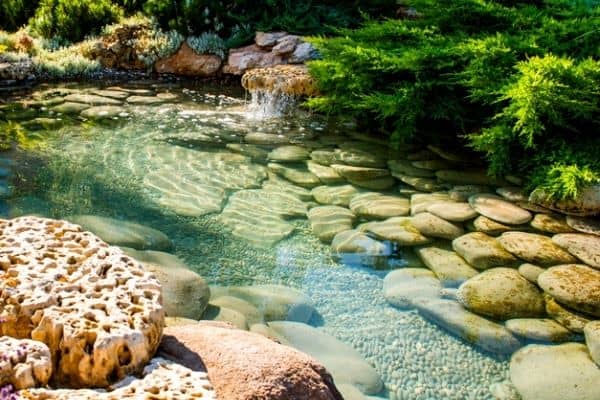
Pond water evaporation can be reduced by covering the pond to provide shade, introducing some floating pond plants and providing wind breaks.
Backyard ponds can easily lose one to two inches (2.5 to 5 cm) of water per week, especially during hot dry weather.
It’s a good idea to check your pond water level regularly during spring and summer and ask someone to keep an eye on your pond if you’re going on vacation for more than a few days.
HOW TO REDUCE POND WATER EVAPORATION
1. Covering the pond
The larger the surface area of your pond, the more water will be lost to evaporation, especially if the pond is located in a spot that receives full sun during the day.
One of the easiest ways to reduce evaporation is by covering the pond.
You can install a shade sail over the pond to block out the harsh sunlight or use a tarp or piece of plastic sheeting to cover part of the pond.
RELATED: 5 Pond Cover Ideas
2. Plant some trees
If you notice that your pond loses more water due to evaporation on windy days, you can plant some trees or shrubs around the pond to provide a windbreak.
Trees will also cast a shadow over the pond to keep the water cooler and reduce evaporation.
Choose evergreen trees and shrubs so you won’t have to worry about cleaning the leaves out of the pond when they fall off.
3. Pond plants
Floating pond plants with large leaves are helpful for reducing evaporation because they cover the surface of the pond and provide shade for fish.
Some of the best choices are water lettuce, duckweed, water lilies and water hyacinths.
Try to aim for 60% of the pond surface to be covered by plants.
You can also plant marginal pond plants around the edges of your pond, such as water iris, pickerel rush and manna grass to provide shade and block out some of the wind.
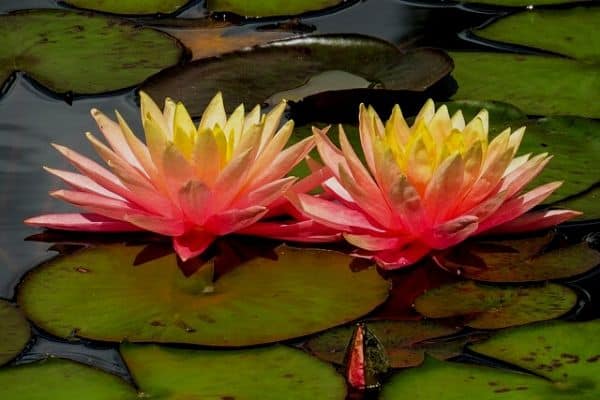
4. Reduce splashing
Water features like fountains, bubblers and aerators help to provide the oxygen needed for healthy pond water, but they can also increase evaporation, especially if they’re causing a lot of splashing.
Try to reduce the amount of agitation and splashing caused by water features by turning the setting down and ensure that the water isn’t splashing outside the pond on windy days.
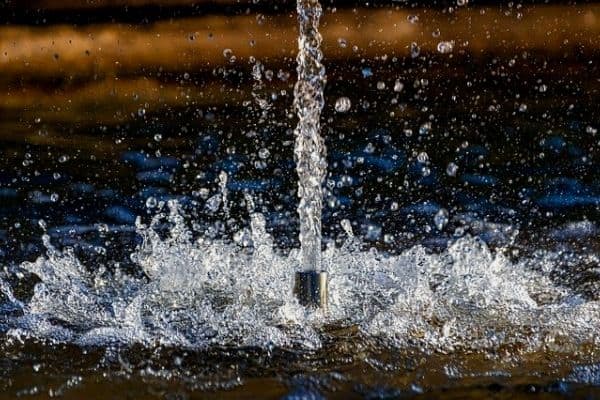
5. Pond tint
Blue colored pond dye helps to shade the pond water from harsh UV rays and reduces water evaporation.
The dye comes in a variety of shades including aqua blue and ocean blue and it gives the pond a beautiful blue color while also reducing algae growth and keeping the water cooler.

6. Build a fence or trellis
Another way to reduce evaporation is to build a lattice screen or trellis at the edge of the pond where it will block the afternoon sunlight.
Hot afternoon sunlight causes the most evaporation and the trellis or screen will shade the pond during this time.
To provide extra shade, plant a flowering vine like star jasmine or mandevilla to grow up the trellis.
You could also build a low wall at one end of the pond to block out some of the afternoon sun.
7. Surface film
Surface films like aquafilm contain a silicone based liquid which spreads across the surface of the pond to form a thin film which reduces evaporation.
Aquafilm is safe for backyard ponds with fish and it has been shown to reduce evaporation rates in ponds and dams by 50%.
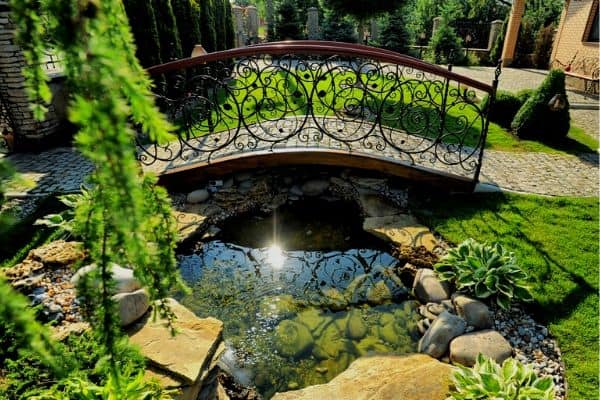
Other reasons for water loss in garden ponds
If you’ve tried some of the above methods and you’re still experiencing excessive water loss, you may need to check for leaks.
Let the water drop down a bit so you can have a good look at the liner. If you notice any rips or holes in the liner you can use a patch kit to repair it.
Also, check your waterfall.
Ensure that the rocks haven’t been displaced and the water is running straight down into the pond and not off to the side.
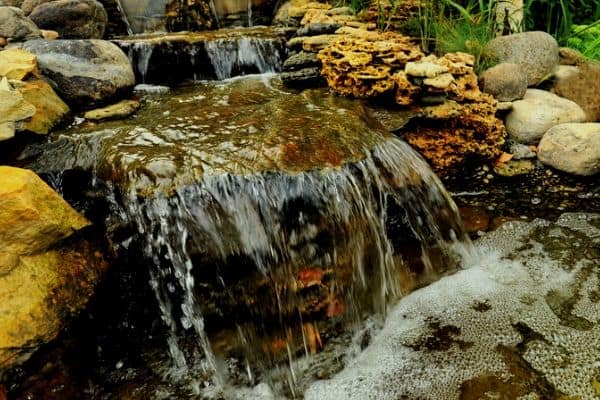
Here’s a quick video that explains how much evaporation you can expect in your backyard pond.
RELATED ARTICLES
- How to Fill a Pond with Water
- Can You Water Plants with Pond Water?
- How Much Sunlight Do Backyard Ponds Need?
- 7 Signs Your Pond is Unhealthy
- How to Keep Pond Water Cool in Summer
So there are my tips for reducing water loss from your pond during the hot summer months.
Excessive pond water evaporation can be challenging for pond owners, but with some regular maintenance and preparation you can ensure that you don’t lose too much water due to evaporation.
Have you had success reducing the amount of water lost from your garden pond in summer? Let me know in the comments below.
Are you on Pinterest? I have boards dedicated to Backyard Ponds and Pond Plants that you may find interesting.
